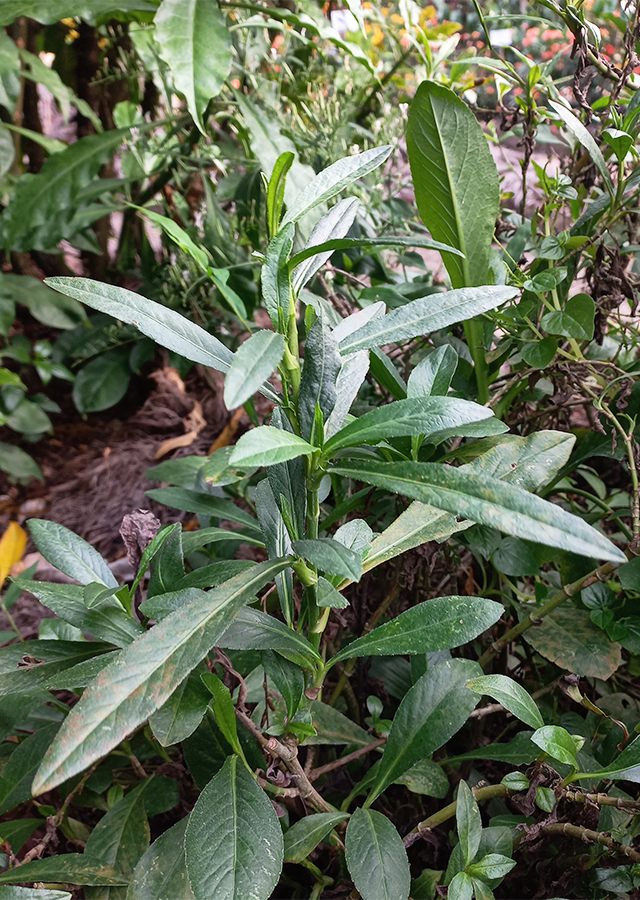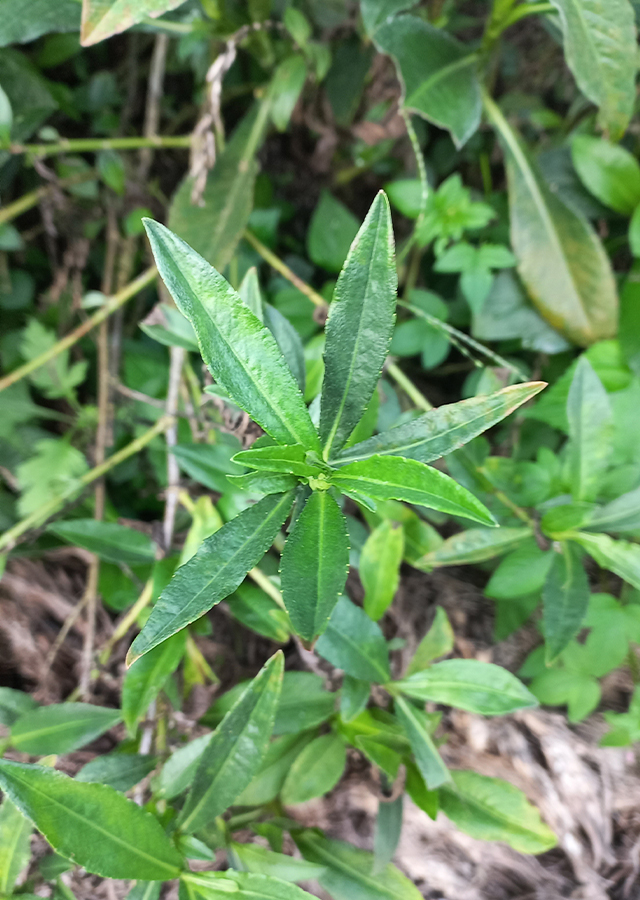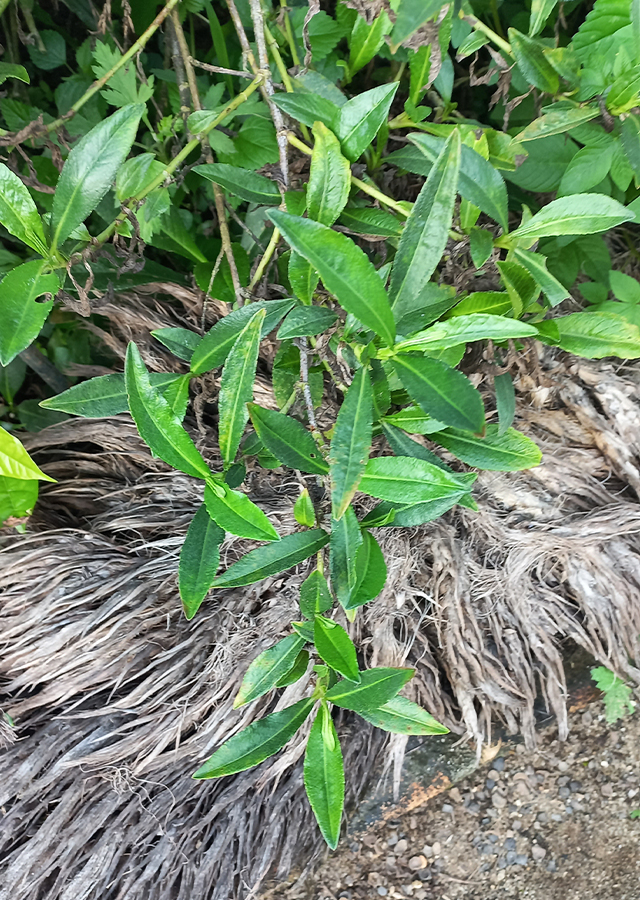Summer Savory
Satureja hortensis L.
Lamiaceae
Location in our garden
Beneficial Weed



Synonym
Satureja pachyphylla K. Koch
Satureja altaica Boriss.
Clinopodium hortense (L.) Kuntze
Habitus
Herbaceous. An annual plant that can grow up to 0.30 m tall
Part Used
Leaves
The Whole Plant
Growing Requirements
Full Sunshine
Drought Resistant
Habitat
Terrestrial
Overview
Satureja hortensis is an aromatic plant originating from Southern Europe and the Mediterranean region. S. hortensis has been grown in Europe, Asia (former Soviet Union, Afghanistan, India, Sri Lanka), South Africa and America (United States, Argentina). In Southeast Asia, this species is cultivated in the Philippines on a small scale for the fresh spice market and also in the mountains of Java (Indonesia). This species is known and used as a spice (condiment and flavoring in various dishes, such as various soups, salads, and others) and medicinal plants since ancient times. Often enjoyed as an herbal tea with various health benefits in it, it is also used as a substitute for salt and pepper, and is known as an important spice in sausage making to amplify its aroma for a sweeter and softer flavour. S. hortensis produces essential oils that are rich in nutrients that are useful for health, one of which is dominantly thymol, which can be used as a mixture of cosmetic ingredients. The resulting oil has also been used in the food industry to flavor processed foods, and in the liquor and perfume industries. In addition, based on its function as a medicinal plant, S. hortensis has many pharmacological activities and good health benefits. However, in its use, it is not recommended to be consumed by pregnant women, due to the lack of research that guarantees the safety of these herbal medicines.
Vernacular Names
No information found. Need further search.
Agroecology
Found growing on dry gravelly and stony slopes to 1500 m. A very easily grown plant when given suitable conditions, it prefers a rich light soil with plenty of moisture and succeeds in a hot dry sunny position. It prefers growing in an alkaline soil but is not too fussy.. It is very intolerant of soils that remain damp and dislikes shade.
Morphology
- Roots - thin, straight, almost cylindrical.
- Stems - erect, much branched, obtuse to smooth, without furrows, with short hairs.
- Leaves - opposite, subsessile, small, linear to lanceolate or obovate, base gradually tapering to very short petioles, leaf margins flat, leaf tips blunt to slightly pointed. Leaves are bronze to green almost black.
- Flowers - hermaphrodite, small. Flower petals (calyx) tubular and 2-lipped, 10 leaf bones, glabrous (barely) inside, thin pilose (feathers soft) outside, with 5 subequal triangular teeth (longer than tube) or 3-dentate upper lip and 2-dentate lower lip. Crown (corolla) tubular and 2-lipped, 4-10 mm long, broad funnel-shaped tube, 3-fid lower lip, emarginate upper lip, light purple to white, occasionally red dotted on throat, thinly pubescent outside. Stamens numbered 4, curved, inserted at the top of the crown tube below the upper lip, shorter than the crown, pistil with 4 lobed ovary, pistil (style) with 2 equal branches ending with a small stigma. Inflorescence consists of loose to dense verticillaster each with 2-20 bisexual flowers, very short pedicel, bracteoles usually longer than petals, long thin ciliated.
- Fruits - oval to ovoid measuring about 1 to 1.4 mm in diameter and pale brown in color, consisting of 4 nutlets, enclosed within a persistent calyx. Nutlet subglobose, about 1 mm long, glabrous, smooth, dark brown in color.
Cultivation
Propagated by seeds - Seed - sow mid spring in situ and only just cover. Germinates in about 2 weeks. The plant strongly resents root disturbance so do not transplant it. In areas with mild winters an autumn sowing will provide an earlier supply of leaves.
Chemical Constituents
Essential oils (thymol, γ-terpinene, α-terpinene, myrcene, carvacrol, p-cymene, α-phellandrene, α- dan β-pinene, sabinene, terpineol, α-thujene), linalool, limonene, phenolic compounds, tannins, steroids, linolenic acid, linoleic acid, oleic acid, palmitic acid, stearic acid, rosmarinic acid, caffeic acid, naringenin, isoferulic acid, apigenin, pyrocatechols, flavonoids (luteolin, quercetin), glycosides (apigetrin and vitexciside), flavonols glycosides (isoquercitrin, astragalin, quercitrin), coumarin derivatives (aesculin and aesculetin).
Traditional Medicinal Uses
- The whole herb, and especially the flowering shoots, is antiseptic, aromatic, carminative, digestive, expectorant and stomachic.
- Taken internally, it is said to be a sovereign remedy for colic and a cure for flatulence, whilst it is also used to treat nausea, diarrhoea, bronchial congestion, sore throat and menstrual disorders.
- A sprig of the plant, rubbed onto bee or wasp stings, brings instant relief.
- The essential oil forms an ingredient in lotions for the scalp in cases of incipient baldness.
- An ointment made from the plant is used externally to relieve arthritic joints.
Part Used
Reference Sources
- Royal Botanic Gardens, Kew. Plants of the World Online: Satureja hortensis L. https://powo.science.kew.org/taxon/urn:lsid:ipni.org:names:457680-1. 23-07-22.
- Fierascu et al. 2018. Phytochemical Profile and Biological Activities of Satureja hortensis L.: A Review of the Last Decade. Molecules, 23(10): 2458. doi: 10.3390/molecules23102458.
- Fern, Ken. Temperate Plant Database. 2021. Satureja hortensis. http://temperate.theferns.info/plant/Satureja+hortensis. 23-07-22.
- Plant Resources of South-East Asia. 2016. Satureja hortensis (PROSEA). https://uses.plantnet-project.org/en/Satureja_hortensis_(PROSEA). 23-07-22.
- Antropocene. 2017. Satureja hortensis. https://antropocene.it/en/2017/05/21/satureja-hortensis/. 23-07-22.

